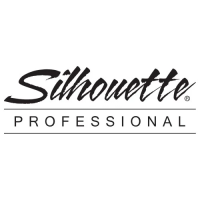4
DO NOT OPERATE APPLIANCE IF THE LINE CORD SHOWS ANY DAMAGE, OR IF
APPLIANCE WORKS INTERMITTENTLY OR STOPS WORKING ENTIRELY.
IMPORTANT
During the rst few minutes of initial use, you may notice smoke and/or a slight odor. This is
normal and should quickly disappear. It will not recur after appliance has been used a few
more times.
BEFORE USING
1. Carefully unpack the iron and remove any protective lms or stickers from the sole plate
and the iron.
2. Clean the sole plate with a soft cloth.
3. When using the iron for the rst time, test it on an old piece of fabric to ensure that the
sole plate and water tank are completely clean.
FILLING THE WATER RESERVOIR
• This iron can be used with normal tap water.
• If the water in your area is particularly hard, it is advisable to use distilled or de-mineralized
water to prevent the scale from forming on the critical point of the iron.
• Do not use water that has passed through a home water softening system. This type of
water contains minerals that will decrease the performance and shorten the life of your
iron.
FILLING:
1. Ensure that the iron is disconnected from the power supply before lling. Move the
Steam Control Knob to the picture indicating NO STEAM and the Fabric Selection Dial
to “OFF”.
2. Pour water into the water inlet to the “MAX” line on the water tank. Do not ll over this
line in order to avoid spilling out of water.
NOTE: Always pour any remaining water out of the water tank after use by turning the iron
upside-down over a sink.
HOW TO USE YOUR IRON
SETTING THE TEMPERATURE:
Insert the plug into the wall outlet and stand the iron upright. Turn the Fabric Selection Dial to
the desired setting. The desired setting has been reached when the pilot light has turned off.
The pilot light will cycle on and off indicating the selection is being maintained.
Always check rst to see whether a label with ironing instructions is attached to the article to
be ironed. Follow these instructions in all cases. If ironing instructions are missing but you do
know the kind of fabric, the table on page 5 may help you.
• Sort the laundry out according to iron temperature rst: wool with wool, cotton with
cotton, etc. Start ironing fabrics which require the lowest temperature and progress to
fabric which require a higher temperature. The iron heats up quicker than it cools down.
• If the fabric consists of various types of fabrics, you should select the fabric with the
lowest temperature requirement and iron on that temperature setting.
• 100% wool fabric may be pressed with the iron set to a steam position. Ideally, set the
Steam Control Dial to maximum position and use a dry pressing cloth.
• When ironing woolen fabrics, shining of the fabric may occur. This may be prevented by
turning the garmet inside out and ironing on the reverse side.
• Velvet and other textures which rapidly acquire shiny spots should be ironed in one
direction only (with the nap) applying light pressure.

